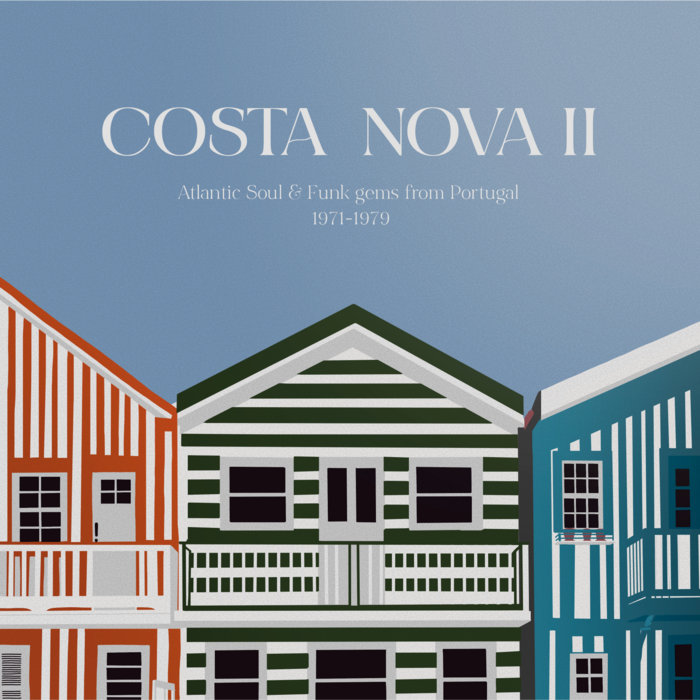
COSTA NOVA II – Atlantic Soul & Funk Gems from Portugal (71-79) – Costa Nova
this blog is GROOVY – check out great Soul, Funk, Jazz, Hip Hop, Bass, Breaks , Reggae, House n many more TUNES
Hey there, music lovers and jingle junkies! Get ready to kick back and groove as we dive into the catchy world of jingles. These little tunes often get stuck in our heads, making us tap our feet while we shop or drive. But have you ever wondered where they come from? Let’s take a funky journey through the history of jingles!
Jingles have roots that stretch all the way back to the 1920s. Yep, that’s right! They emerged during a time when radio was king, and advertisers were eager to catch listeners’ attention. With more people tuning in at home, brands jumped on the opportunity to create catchy tunes that would stick—kind of like glue but much groovier.
In 1926, The Radio Corporation of America (RCA) created an advertising campaign featuring short songs specifically designed for radio broadcasts. This marked one of the first uses of musical jingles in advertising history. Who could forget those early ads for products like soap and soft drinks?
The term “jingle” itself is a bit mysterious but most agree it comes from the “jingling” sound created by lively tunes accompanied by chimes or bells. Imagine this: you’re washing your hands with a certain brand’s soap while their peppy jingle plays on air—and just like that—you’re hooked!
By the late 1930s and into the 1940s, jingles became even more popular thanks to advancements in recording technology and an increase in commercial slots on radio shows.
As we rolled into the 1950s—the era filled with icons like Elvis Presley—the world welcomed TV advertisements with open arms…and ears! Advertisers found that combining visuals with catchy melodies was pure gold. Enter stage left: Mad Men, who knew how to market products using these snappy tunes.
One cheeky fact? Many famous musicians dabbled in writing jingles early on before hitting it big! We’re talking about legends like Bob Dylan (yes indeed!) who crafted quirky slogans for several commercial spots before becoming Mr. Blowin’ In The Wind himself.
Throughout its evolution, many notable artists lent their voices or writing skills to some iconic jingles:
This could practically be called “the secret career path!” Who knew these musical giants had side gigs creating snazzy hooks?
A hit jingle has certain ingredients that’ll keep folks humming along long after they’ve seen—or heard—it:
Some classic examples include:
Oh yes—they are totally earworms!
Fast forward to today, where social media reigns supreme! Platforms like TikTok make room for new-age companies embracing viral marketing strategies involving short clips paired with hip-hop beats or trendy dances—which brings us closer back around full circle…what do you know about reports suggesting internet users can’t resist singing along?
Funny story alert: Some brands will hire top-notch composers only for them to produce something completely bonkers based on humorous concepts instead of serious sales pitches! Think awful puns paired beautifully sung melodies—it’s hard not chuckle through listening sessions…
Did you hear about how some agencies accidentally ended up reusing old ad music? Big oops moment lead bands—including metal groups—to discover segments composed decades earlier without realizing they’d inadvertently become part-time spokespersons—so cabbage farmers got heavy metal hype unexpectedly!
And then there are those famous one-hit wonders who popped up solely because they nailed a memorable ad tune—some retired happily afterward knowing they’d always be remembered as ‘that guy who wrote THAT catchy song’…
So there you go—a warp-speed look at what makes jingles tick over nearly a century-long history packed full surprises aplenty—and loads-a-laugh moments tucked away behind-the-scenes too! Whether they’re making us laugh or bringing memories flooding back from childhood product advertisements featured throughout every road trip—we’ve all got our favorites bouncing around somewhere inside us still today….
So next time you’re humming an old-time favorite jingle while waiting in line for coffee remember those quirky characters crafting enticing soundbites meant just-for-you…and maybe even throw ’em some love next time you’re flipping through channels looking out spot-on talent lingering nearby restaurants trying snag last tasty treats available!
Keep it groovy y’all—all hail cute little jingles keeping spirits bright everywhere 🎶✨

COSTA NOVA II – Atlantic Soul & Funk Gems from Portugal (71-79) – Costa Nova